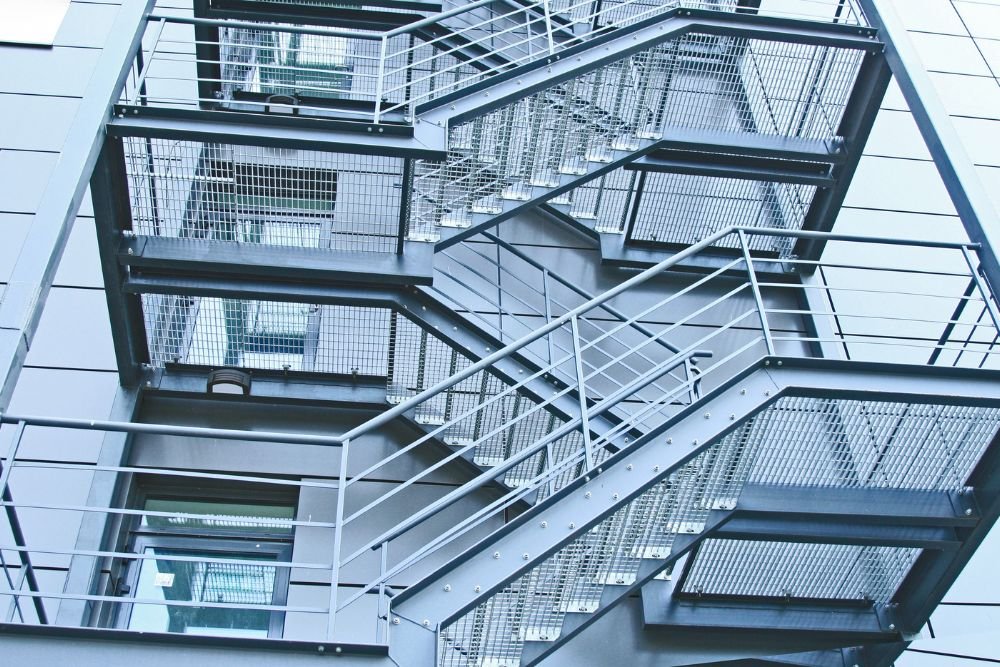Is Your Fire Escape a Safe Haven or a Hidden Hazard?
Is Your Fire Escape a Safe Haven or a Hidden Hazard?
Blog Article

When disaster strikes, your fire escape needs to be your lifeline. But before you rely on it in an emergency, take a closer look at its condition. Over time, these often-overlooked structures can deteriorate, posing hidden risks. Loose railings, rusted components, and crumbling steps can turn your escape route into a recipe for injury.
- Take a look at your fire escape for any signs of damage or wear and tear.
- Report any problems immediately to your building management.
- Confirm that all railings are secure and stable.
A little maintenance can go a long way in ensuring your fire escape remains a safe haven, not a hidden Fort Lauderdale luxury waterfront homes for sale hazard.
Red Flags: When It's Time to Repair Your Fire Escape
A fire escape is a vital safety feature in your dwelling. However, over time, it can wear down, posing a serious risk to your security. Knowing when to repair your fire escape is crucial.
- Look out for corroded metal components, as this indicates weakness.
- Broken handrails or steps are a major danger, increasing the risk of falls.
- Peeling paint or coating can indicate underlying damage that require attention.
Ignoring these red flags can have terrible consequences. If you notice any of these indicators, it's time to call a qualified professional for a thorough inspection and service. Your safety is paramount, so don't procrastinate until it's too late.
Is Your Fire Escape Safe? Here Are the Warning Signs
Your fire escape is a vital piece of equipment designed/built/crafted to ensure your safety in an emergency. It's crucial to inspect/to check/to evaluate it regularly and address any issues promptly. Neglecting your/its/this fire escape can have devastating/serious/tragic consequences. Here are some telltale/clear/obvious signs that you need fire escape repairs:
- Rusted/ Corroded/Damaged metal components: Fire escapes are exposed to the elements, which can cause/may lead to/frequently result in rust and corrosion over time.
- Loose/Worn/Missing handrails or steps: These provide essential support and stability. Damage/Wear/Deterioration makes them dangerous.
- Cracked/Split/Broken flooring: A solid surface is essential/necessary/critical for safe passage. Cracks or holes can be a serious hazard.
If you notice any of these warning signs/issues/problems, don't delay/hesitate/put it off. Contact a qualified professional immediately to inspect/evaluate/assess your fire escape and make the necessary repairs. Your safety is paramount/most important/the top priority.
Safety First: Fire Escape Inspection Guide
Regular exit inspections are crucial for ensuring the integrity and functionality of your building's escape routes. These inspections help identify potential hazards that could impede a safe and efficient exit in case of a emergency.
- Inspecting the structural integrity of the fire escape is paramount. Look for signs of rust, corrosion or warping that could compromise its ability to support occupants.
- Ensure secure railings to prevent falls during an evacuation.
- Examine the condition of the stairs for safe traversal.
- Make sure access points are unobstructed to the fire escape from all floors it serves.
A thorough fire escape inspection can reduce damage in the event of a crisis.
Protecting Your Family: Essential Fire Escape Maintenance Tips
Regularly inspect your fire escape plan and confirm it's up-to-scratch. Check cells in smoke alarms monthly and replace them annually. Teach your family how to employ fire extinguishers safely and run regular drills so everyone knows what to do in an emergency. Ensure clear pathways to your escape route, free of obstacles. A well-maintained fire escape can protect lives.
Remember, your security is essential.
Make Your Fire Escape Safe and Sound: A Guide to Repairs
Your fire escape is a vital safety feature from a burning building. It's essential to ensure it remains in top condition at all times. Regular checks and repairs can help prevent potential hazards.
- Examine the condition of your fire escape frequently, looking for signs of wear and tear..
- Tighten any loose bolts or nuts.
- {Paint or coat metal surfaces to prevent corrosion.|Apply a protective coating to the fire escape to shield it from the elements.
Seek expert assistance if you lack the skills or tools for proper repair.. Your safety is paramount.
Report this page